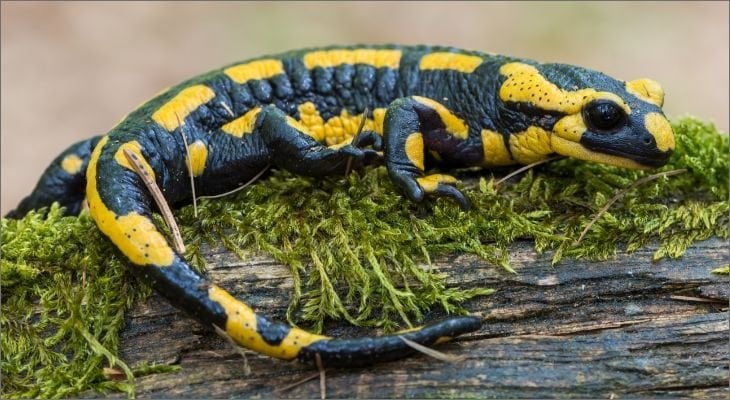
Salamanders make great pets. They’re ideal for apartment residents because they’re quiet. They don’t take up a lot of room because they’re small. They don’t need a background to run around like a dog. They don’t require a lot of personal attention, so they’re also perfect for busy working professionals. Salamanders have a lot of other attractive benefits as a pet, but here is what you need to know about choosing a salamander as a pet.
What to Know About Salamanders
The first thing to know about salamanders is that a salamander is an amphibious creature. The word salamander describes a certain group of amphibians. Salamanders are not considered lizards. Salamanders have moist skin and lizards have dry skin. Varieties of salamanders can range in size from 16 mm (Minute salamanders indigenous to Mexico) all the way up to six feet long (an endangered variety found in China).
The Best Salamanders to Own For Beginners
Owning a pet salamander is very different than owning a dog or cat. Few people grew up with a pet salamander, so chances are that you’re inexperienced with owning this unique reptile. It’s important to learn about which type of salamander is best for you to own, and how to care for it.
For beginners, the best salamander to own would be one from this list:
Slimy Salamander
Don’t let the name fool you. Slimy salamanders are named so because of the feel of their skin. But the layer of “slime” helps this critter maintain its body’s water content. They require very little attention and subsist on a diet of crickets and other small invertebrates that you can procure from a pet store.
Fire Salamander
This colorful critter is marked with large yellowish-orange blotches or stripes. They can live up to ten years. They eat earthworms and can grow up to 12 inches long.
Marbled Salamander
Marbled salamanders are chunkier than some others. They love to burrow so much that some people call them mole salamanders. They can get up to five inches long and enjoy live insects for food.
Keep in mind that because salamanders are so small, you can fit more than one inside a large enough habitat doesn’t mean you should before knowing more about putting two together. Just make sure you ask your veterinarian before putting two different kinds of salamanders together to make sure they will cohabitate happily.

